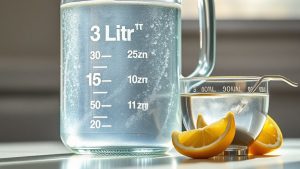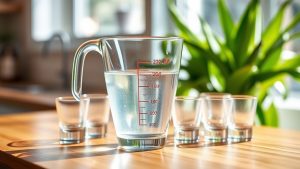
To convert 1 liter to ounces, it's important to know which system you're using. In the US, 1 liter equals approximately 33.814 fluid ounces, while in the UK, it's about 35.195 fluid ounces. Accurate conversions matter, especially for recipes and scientific applications, as even small miscalculations can lead to undesirable results. If you're curious about how density factors into conversions or other measurement tips, you might find the following information helpful.
When you need to convert 1 liter to ounces, it's important to know the standard measurements for accuracy. The conversion between these two units involves understanding that liters measure volume while ounces can refer to both volume (fluid ounces) and mass (weight). For most everyday needs, you'll be converting fluid liters to fluid ounces, particularly when dealing with liquids like water or juice.
In the United States, the standard conversion is straightforward: 1 liter is approximately 33.814 US fluid ounces. If you're using UK measurements, keep in mind that 1 liter is about 35.195 UK fluid ounces. When you need to make these conversions, it's necessary to use the correct factor based on the system you're working with, as this can affect recipes, scientific measurements, or any situation where precision is critical.
If you're dealing with substances where weight matters rather than volume, then density becomes an important factor. For example, to convert liters to ounces for a specific material, you'll need to know its density. The formula you'd use is ounces = liters × 35.274 × density (if the density is provided in g/mL). This means that if a liquid has a density of 0.7 g/mL, you'd calculate the conversion by multiplying 1 liter by 35.274 and then by 0.7, which gives you a different result than simply converting fluid ounces.
In cooking or baking, you might often find yourself needing to convert liters to ounces when following a recipe. This is especially true if a recipe lists ingredients in liters, while your measuring tools display ounces. Accurate conversions guarantee that your dishes turn out as intended. This is crucial for achieving the desired taste and texture in your cooking.
Similarly, in scientific experiments, precision in volume measurements is significant; using liters instead of ounces or vice versa can lead to substantial errors in results.
For industrial applications, knowing how to convert liters to ounces can also be necessary. In manufacturing processes, the quantities of different substances often need to be measured accurately to maintain consistency and quality. Pharmaceutical dosing requires precise measurements, as the difference between a milliliter and an ounce could impact patient safety.
To simplify the conversion process, you can utilize online calculators. These tools can quickly provide the conversion you need without the hassle of manual calculations. If you prefer doing it yourself, just remember the basic conversion factors, and always verify your calculations are precise to avoid errors. Rounding values can be useful, but be careful not to lose accuracy in important situations.
Conclusion
In conclusion, converting 1 liter to ounces is a handy skill that can come in clutch during cooking or when measuring liquids. With 1 liter being roughly 33.8 ounces, you can easily navigate recipes and beverage choices. Remember, knowing these conversions helps you avoid confusion and guarantees you get your measurements right. So, the next time you need to make that conversion, you'll be ready to hit the ground running!



